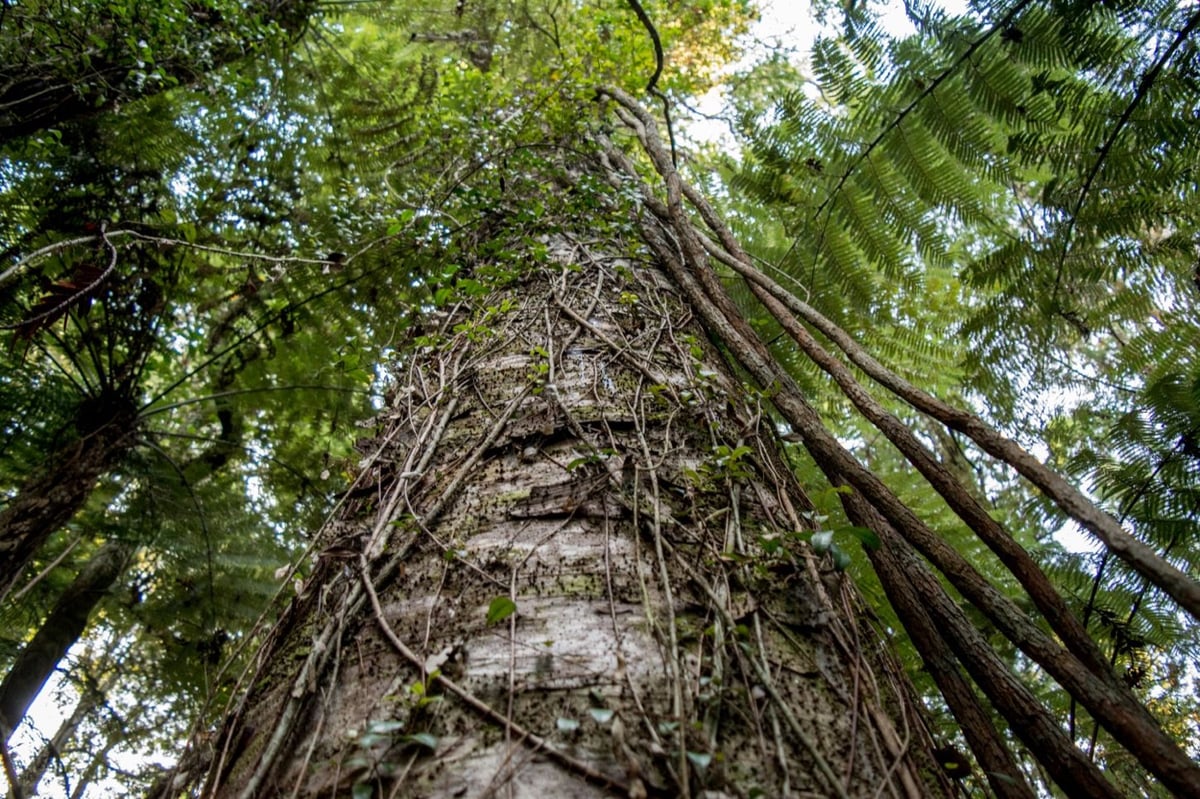This tree stump is kept alive by its neighbours

It’s sometimes easy to think that we know how most things work, especially those that surround us and we take for granted. Truth is, our knowledge is still advancing and constantly updating. There is so much we don’t know, including our own bodies and even trees. This story by Ed Yong looks at how a tree stump (no leaves, no stems, no greenery) is still alive in New Zealand, accessing water from its neighbours trough a connected root system.
Leuzinger and Bader eventually showed that the stump is connected to one or more of the kauri trees around it, probably via its roots. They are hydraulically coupled: The water flowing through the full-size trees also drives water through the stump, keeping it alive. It will never green again, never make cones or seeds or pollen, never unfall, never reclaim its towering verticality. But at least for now, it’s not going to die, either.

Botanists don’t know yet how the stump is doing this, why its neighbours are sharing. Maybe they can’t identify freeloaders? Maybe they can’t break the connection? Perhaps the stump extends the root system for all of them and proves beneficial?
How the stump keeps water flowing is still a mystery. “The vessels in a tree aren’t built for this,” Leuzinger says. “They’re one-directional. Water goes from the roots to the crown. But if you’re a living stump, you have to reorganize your pathways so water can enter and leave again. This is completely unknown.”
Another botanist, Annie Desrochers, thinks this is pretty common in various forest, if misunderstood.
“That means trees can share water, nutrients, and diseases,” she says. If there’s a drought or insect epidemic, connected trees are more likely to survive, because resources can flow from unaffected individuals to beleaguered ones.
One more indication that we need to look at forests as super organisms, as a wood wide web.
(Header image by the Kauri Museum.)





Stay Connected